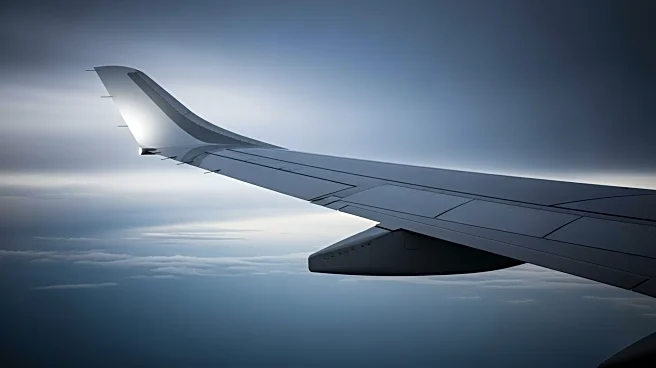What's Happening?
A Boeing 747 freighter operated by AirACT skidded off the runway at Hong Kong International Airport, crashing over a sea wall and hitting a ground services vehicle. The incident resulted in the deaths
of two occupants of the vehicle, while the four crewmembers of the aircraft survived and were evacuated to the hospital. The aircraft, a 32-year-old 747-481 BDSF, was operating under a wet-lease arrangement as Emirates SkyCargo Flight 9788 from Dubai. The Airport Authority of Hong Kong reported that the aircraft landed on North Runway 07L and is suspected to have lost control, veering sharply off to the left. The runway remains closed pending safety assessments.
Why It's Important?
The incident highlights the critical importance of runway safety and operational protocols at major international airports. The fatalities underscore the risks faced by ground staff during aircraft operations. The closure of the North Runway at Hong Kong International Airport could impact flight schedules and cargo operations, affecting logistics and supply chains. The event may prompt reviews of safety measures and emergency response protocols at airports globally, emphasizing the need for stringent compliance with international aviation standards.
What's Next?
The Airport Authority of Hong Kong will conduct safety assessments to determine when the North Runway can be reopened. Investigations into the cause of the incident are likely to be conducted by aviation authorities, which may lead to recommendations for improved safety measures. Airlines operating at Hong Kong International Airport may need to adjust their schedules and operations until the runway is reopened, potentially affecting passenger and cargo services.
Beyond the Headlines
The incident may lead to discussions on the aging fleet of aircraft and the necessity for regular maintenance checks to ensure safety. The conversion of passenger aircraft to freighters, as seen with the involved Boeing 747, could be scrutinized for potential safety implications. The role of wet-lease arrangements in aviation operations might also be examined for their impact on safety and accountability.











